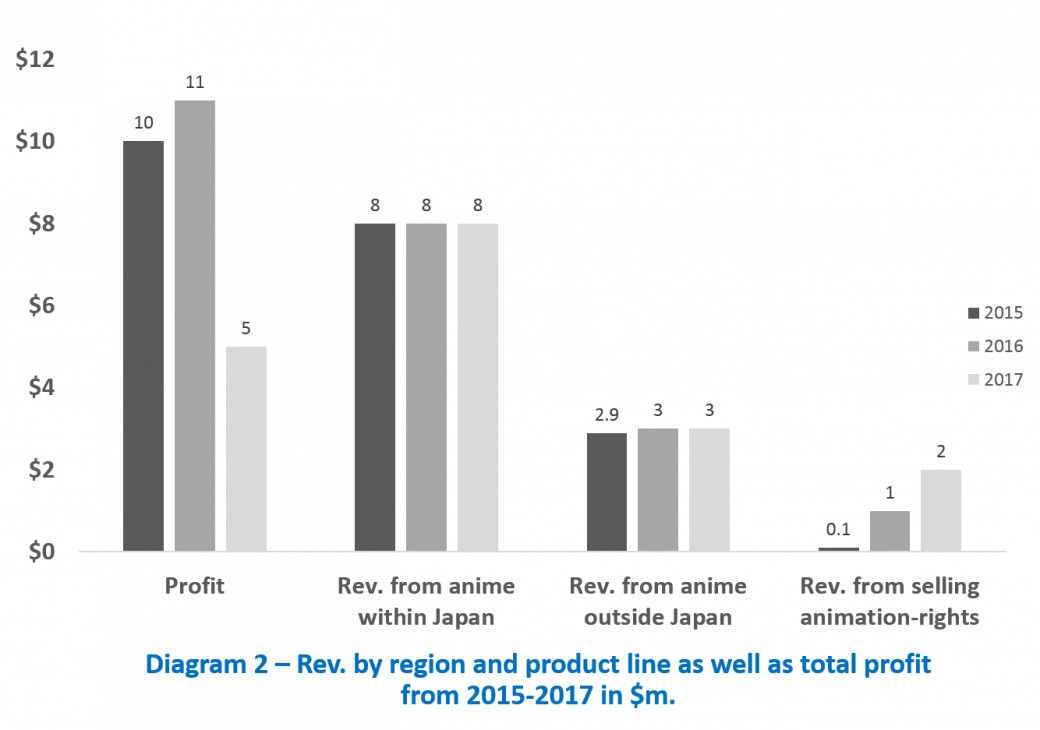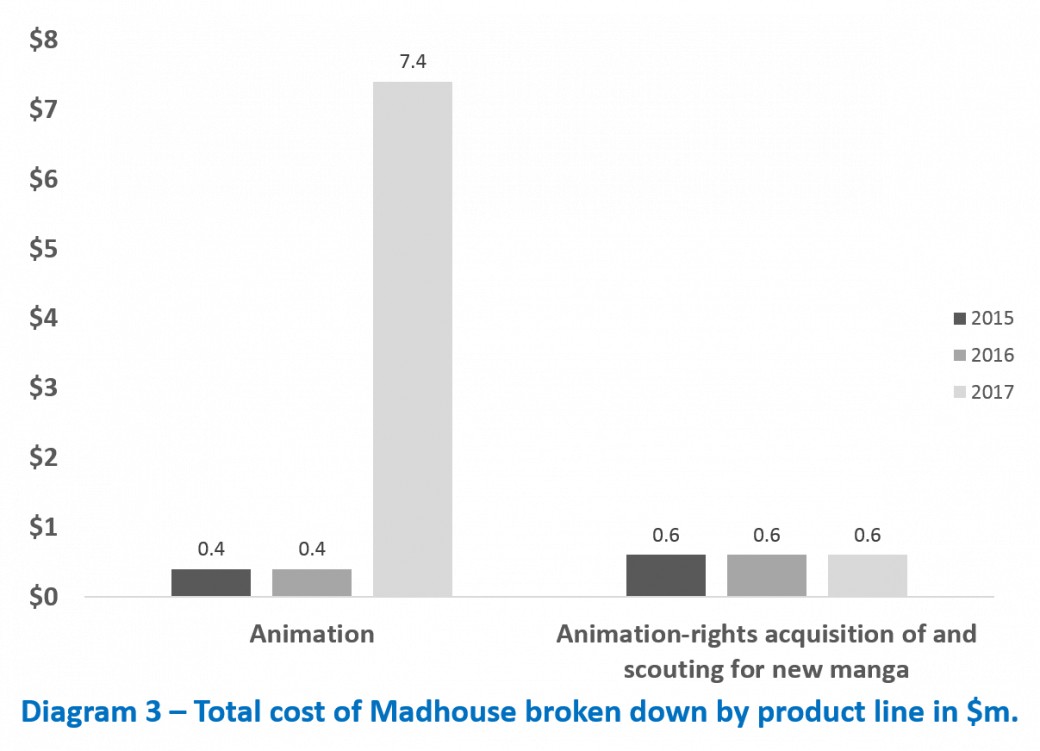The Madhouse Animation Crisis
Your client is Madhouse Studios, one of the largest anime producers in Japan. The anime-industry is flourishing. Originally revenue was generated mainly in Japan but the trend is that revenues outside of Japan are growing at a steady rate of 15% a year as more and more non-Japanese people enjoy anime. Despite this rapidly growing new segment, Madhouse lost $6m in profits at the end of 2017 even though profits were growing steadily the years before.
Madhouse has given you the objective to find the root cause of the loss in profitability and to advise them on how to proceed from here.
Case Comments
II. Revenue Analysis by Region & Product Line
III. Cost Analysis by Product Line
V. Conclusion
VI. Next steps
Further Questions
How would Netflix react if Madhouse stopped selling them animation rights? What factors would you need to look at to predict the response of Netflix to that?
If Madhouse would on average acquire the rights to 8 out of the top 10 manga of the year what would happen if Madhouse stopped selling their rights to Netflix? If Madhouse would only be able to acquire 2 out of the top 10 manga every year what would that mean for partnership negotiations with Netflix?



